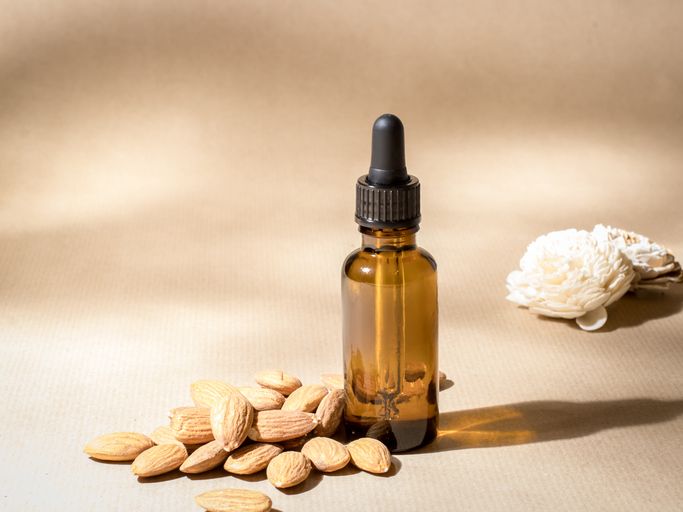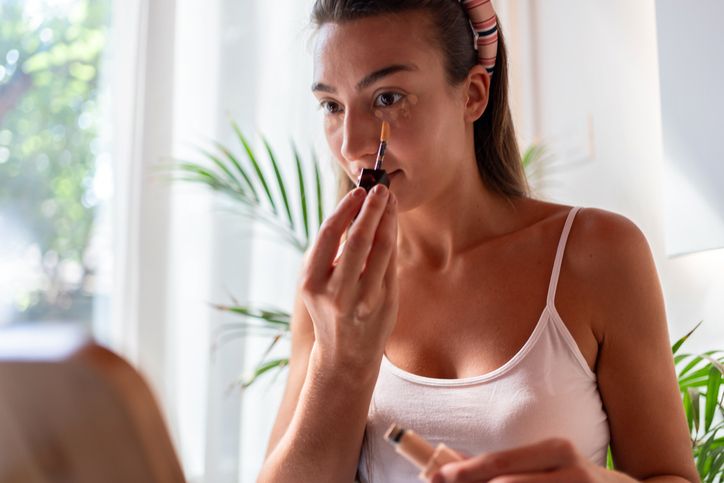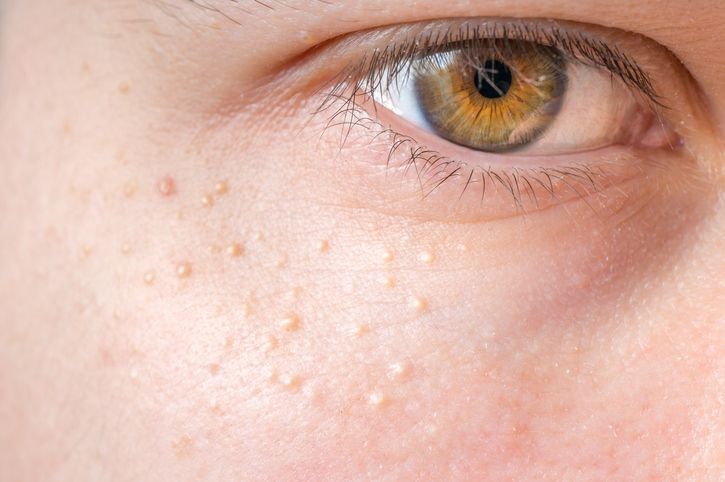- Home
- Trend
- Weight Loss Strategies
- Acne Tips
- Hair Health Information
- Blemish Removal Tips
- Acne Scar Removal Tips
- Muscle Building Techniques
- Intimate Care Tips
- Postpartum Intimate Care
- Eye Bags Wiki
- Tips for Face Slimming
- Secret of Permanent Hair Removal
- Breast Enlargement Tips
- Cure to Snoring
- Marionette Lines
- Skin-Tightening Secrets
Achieving smooth, glowing skin often comes down to one persistent skincare goal: minimising the appearance of large pores. Many people with oily, combination, or acne-prone skin experience enlarged pores, which can make skin texture uneven and affect confidence. So today, let's dive into why pores become noticeable and reveal what are some effective ways to shrink them.
The Root Causes of Enlarged and Clogged Pores in Oily Skin
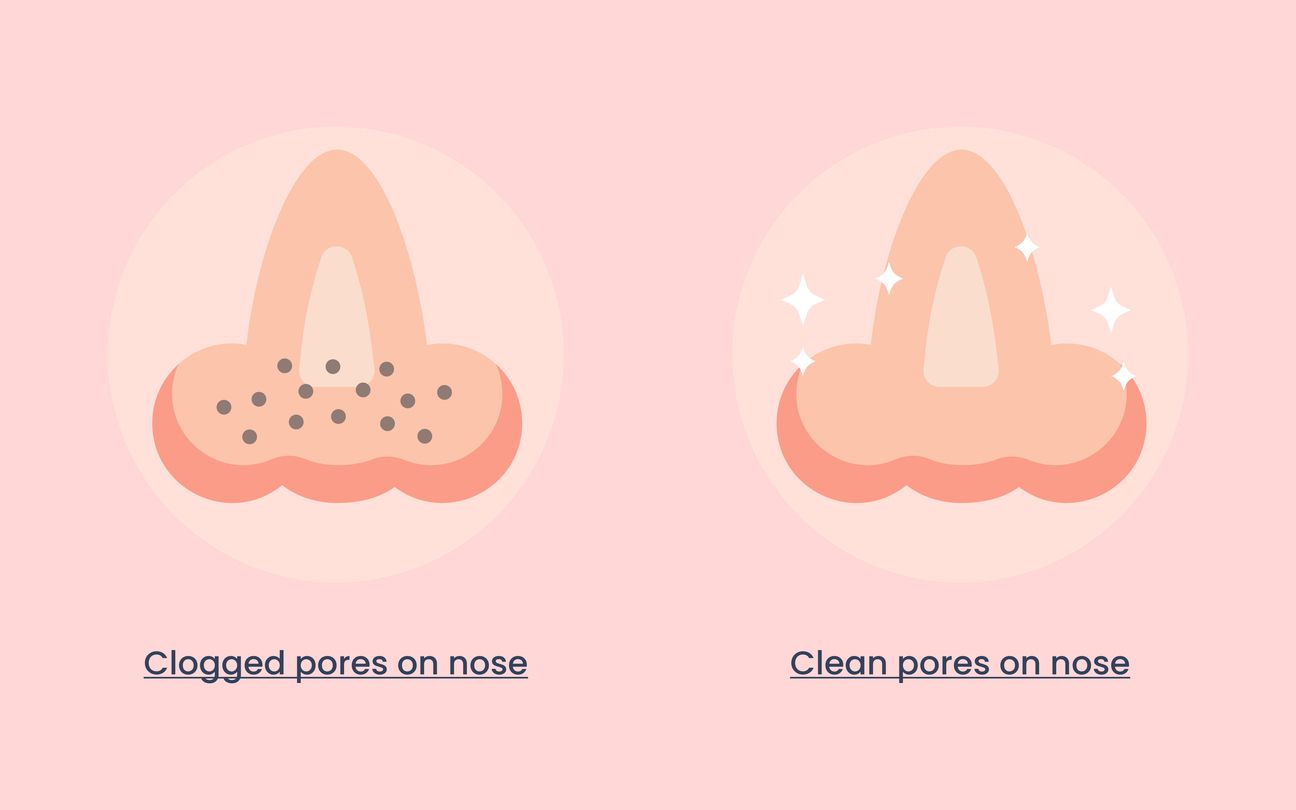
If you have oily skin, you may have noticed that enlarged pores tend to be a common issue. Pores are crucial for maintaining skin health, as they release sebum (natural skin oils) that helps protect and lubricate the skin’s surface.
However, for those with oily skin, excessive sebum production can lead to clogged, stretched, and visibly larger pores. Here’s a closer look at why oily skin types often struggle with enlarged pores and what contributes to this issue.
1. Overactive Sebaceous Glands in Oily Skin
For people with oily skin, the sebaceous glands—responsible for producing sebum—are often overactive. Here’s how this affects pore size and visibility:
Excess Oil Production: With oily skin, the sebaceous glands produce more sebum than necessary. When this oil combines with dead skin cells and environmental pollutants, it clogs the pores and stretches them, making them appear larger and more noticeable. These blockages can also lead to blackheads, whiteheads, and even acne, which further accentuates pore visibility.
Higher Risk of Clogged Pores: Excess oil has a sticky texture that traps dirt, dead skin cells, and makeup residue within the pores. The result is clogged pores that look and feel larger. In areas like the T-zone (forehead, nose, and chin), where oil production is naturally higher, this issue becomes even more pronounced, leading to an uneven skin texture and a shiny appearance.
2. Skin Type and Genetic Factors
Genetics play a major role in determining whether you have oily skin, which in turn impacts pore size. Here’s why:
Genetically Larger Pores in Oily Skin: People with oily or combination skin types often inherit larger pores from family members, especially in high-sebum areas like the nose and forehead. Unlike those with dry skin, whose pores remain smaller and less visible, those with oily skin need to manage pore size by controlling sebum production effectively.
Sebum Production by Skin Type: Skin types with naturally high oil production are more prone to larger pores. Sebum, though beneficial in moderation, is produced in greater quantities in oily skin types, often requiring a skincare approach that focuses on balancing oil and gently clearing away impurities.
3. Sun Exposure and Loss of Skin Firmness
The combination of oily skin and sun exposure can further contribute to pore enlargement, especially as it affects the skin’s structural proteins:
UV Rays and Collagen Breakdown: Sun exposure speeds up collagen and elastin breakdown, the proteins that help keep pores tight and the skin firm. For oily skin types, this loss of structural integrity around the pores means they become more stretched, making pores appear even larger over time. People with oily skin may notice that sun exposure exacerbates their pores, particularly if they aren’t using sun protection.
Ageing in Oily Skin: Though oily skin can delay certain signs of ageing, over time, collagen loss can still impact pore appearance. As the skin loses firmness, the areas around the pores slacken, making the pores appear even more pronounced.
Preventing Clogged Pores and Acne Breakout: 8 Ingredients to Look Out for
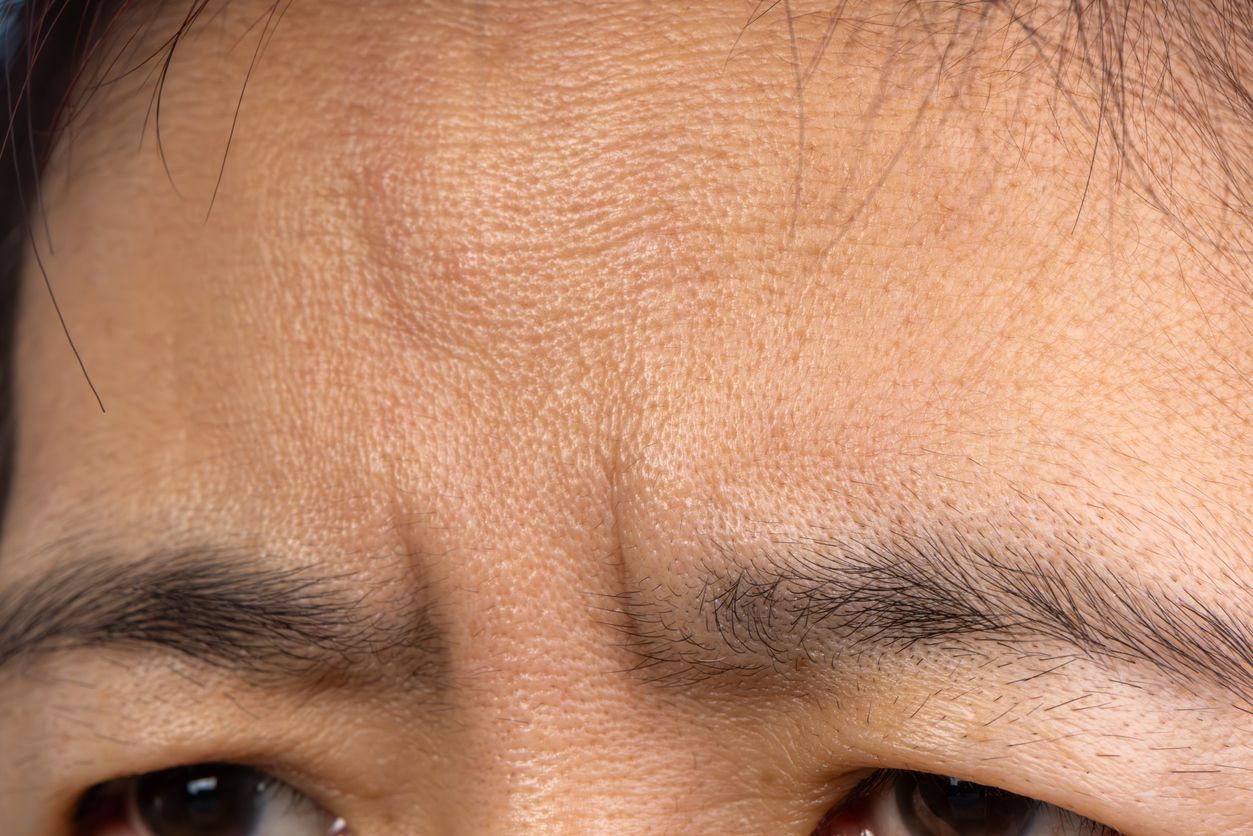
For people with oily skin and large pores, certain ingredients can make the problem worse by clogging pores, increasing oiliness, or irritating the skin. Many of the ingredients mentioned below can contribute to breakouts in people with oily skin, which may eventually lead to acne scars, particularly if the skin is prone to scarring or if acne becomes severe. Here are some common ingredients to watch out for:
1. Heavy Oils and Butters
Heavy oils and butters can be comedogenic, meaning they have a tendency to clog pores. These ingredients may feel overly greasy on oily skin, trapping dirt, oil, and dead skin cells within pores, which leads to breakouts and more visible pore size.
Examples: Coconut oil, cocoa butter, mineral oil, lanolin.
Alternative: Look for lightweight oils like jojoba or squalane, which are less likely to clog pores and mimic skin’s natural sebum.
2. Alcohol-Based Astringents
While alcohols give an immediate drying effect, they can strip the skin of natural oils, causing it to produce more sebum to compensate. This rebound effect can worsen oily skin and make pores appear larger over time.
Examples: SD alcohol, denatured alcohol, ethanol.
Alternative: Opt for gentle, hydrating toners with ingredients like witch hazel (in small amounts), aloe vera, or rose water to help balance oil without over-drying.
3. Silicones
Silicones provide a smooth, matte finish in makeup and skincare products, but they can create a barrier on the skin that traps oils, sweat, and dead skin cells within pores. This can lead to congestion and more pronounced pore size.
Examples: Dimethicone, cyclopentasiloxane, cyclohexasiloxane.
Alternative: Choose water-based or silicone-free products, especially if you find that silicones contribute to clogging.
4. Synthetic Fragrances and Essential Oils
Synthetic fragrances can irritate the skin, leading to inflammation and excess oil production as the skin tries to soothe itself. Even some essential oils can be too harsh on oily skin, potentially triggering breakouts and irritation.
Examples: Fragrance, linalool, eugenol, lemongrass oil, lavender oil, tea tree oil (in excess).
Alternative: Fragrance-free or products with only mild, skin-friendly essential oils (like chamomile or rose) are better options for sensitive, oily skin.
5. Thick Emollients and Occlusives
These ingredients are meant to lock moisture into the skin, but for oily skin types, they can be too heavy and occlusive, leading to blocked pores and breakouts. They’re particularly problematic if you already have large, visible pores.
Examples: Petroleum, paraffin, beeswax, isopropyl myristate.
Alternative: Instead of heavy occlusives, go for lighter moisturisers containing humectants like hyaluronic acid and glycerin, which hydrate without clogging pores.
6. Sulphates
Sulphates are commonly found in cleansers because they create a foamy lather, but they can be too harsh for oily skin, stripping away natural oils and causing the skin to produce even more oil. This can lead to clogged pores, irritation, and an imbalance in the skin’s natural oil production.
Examples: Sodium lauryl sulphate (SLS), sodium laureth sulphate (SLES).
Alternative: Opt for sulphate-free cleansers with gentler surfactants, such as cocamidopropyl betaine or decyl glucoside, which cleanse without over-drying.
7. Comedogenic Ingredients
These ingredients are known to clog pores and are often too heavy for oily skin types. They increase the risk of blocked pores and can worsen the appearance of large pores.
Examples: Isopropyl palmitate, myristyl myristate, acetylated lanolin, laureth-4.
Alternative: Look for products labelled “non-comedogenic,” especially for moisturisers, sunscreens, and foundations, to avoid unnecessary pore congestion.
8. Waxes and High-Density Powders
Waxes and high-density powders are often found in makeup, such as foundations and setting powders. For those with oily skin, they can cause a buildup in the pores, leading to blackheads, whiteheads, and visibly larger pores over time.
Examples: Beeswax, carnauba wax, talc.
Alternative: Opt for lighter powders and wax-free formulas, or consider mineral-based products that are less likely to clog pores and are more breathable.
免費體驗
Fotona 4D NightLase Snoring Treatment
1 Minute Self-Registration
Date should not be before minimal date
Advanced Treatment for Lasting Results: Perfect Medical's Acne Scarring Treatment
Dealing with persistent breakouts and enlarged pores due to oily skin can be a long journey, so finding an effective treatment to reduce acne scars and refine skin texture can be transformative. Perfect Medical’s Acne Scarring Treatment is an advanced solution designed to address both acne scars and pore size, offering a noticeable improvement in skin smoothness without the need for downtime.
Targeted Laser Technology for Acne Scars and Pore Minimization
Acne Scarring Treatment uses precise 1064nm wavelength laser energy that deeply penetrates the skin to target excess melanin and damaged skin tissue. This stimulates collagen production, which helps to rebuild the skin’s support structure and reduces the appearance of both acne scars and enlarged pores.
Collagen's role in strengthening skin firmness also prevents pores from expanding, which is especially beneficial for those with oily skin that often experiences recurrent breakouts.
Regulating Sebum and Improving Skin Texture
The treatment not only addresses scarring but also helps regulate excess oil production by minimising sebaceous gland activity. For individuals with oily skin, this can reduce pore-clogging sebum, making the skin less prone to breakouts and helping maintain smaller pores over time.
Boosting Skin Cell Turnover for Smoother, Clearer Skin
By enhancing skin cell turnover, this treatment helps slough off dead skin cells that often clog pores and lead to breakouts. This renewal process gradually improves skin texture and clarity, addressing not only current scarring but also reducing the frequency of future breakouts. With fewer breakouts, there’s a lower chance of developing new scars, supporting a clear and refined appearance over time.
Daily and Weekly Steps to Minimise Pores
Aside from choosing an acne scarring treatment, minimising pores also involves adopting consistent, effective skincare habits. Here’s a breakdown of daily and weekly steps you can integrate into your routine to keep your pores clean, unclogged, and less noticeable.
Daily Essentials for Pore Minimising
Wear Sunscreen Every Day
We can't stress this enough: UV rays accelerate collagen loss and weaken skin’s structure around pores, making sun protection crucial. Choose a non-comedogenic sunscreen to shield your skin without clogging pores. Wearing sunscreen daily can preserve skin firmness, keeping pores from expanding.
Use a Gentle Cleanser
Cleansing is vital to keep pores clear of excess oil, dead skin cells, and environmental pollutants. For those with sensitive skin, a gentle, sulphate-free cleanser is best to avoid irritation. Oily skin types might benefit from foaming cleansers that can break down excess sebum without stripping the skin.
Apply Exfoliating Acids
Exfoliating acids, such as salicylic acid and glycolic acid, are pore-friendly ingredients. Salicylic acid is oil-soluble, meaning it can penetrate deep into pores to clear blockages and reduce oiliness. Glycolic acid, an AHA (alpha hydroxy acid), exfoliates the surface layer of skin, removing dead cells that can clog pores. Regular exfoliation promotes skin cell turnover, keeping pores clear and skin texture smooth.
Hydrate with Oil-Free Moisturizers
It’s a misconception that oily skin doesn’t need moisturising. Proper hydration helps regulate oil production, which can keep pores from becoming congested. Lightweight, oil-free moisturisers with ingredients like hyaluronic acid can provide hydration without adding excess shine or clogging pores.
Weekly Boosters for Pore Care
Use a Clay Mask
Clay masks are known for their ability to absorb excess oil and impurities from the skin. Using a clay mask once or twice a week can help draw out oil and dirt from deep within the pores, giving them a visibly smaller appearance. Bentonite and kaolin clay are both effective at reducing shine and controlling excess sebum.
Consider Pore Strips for Occasional Use
Pore strips can provide a quick fix for removing blackheads and debris from large facial pores, especially around the nose. However, they should be used sparingly, as frequent use can irritate sensitive skin. For a more sustainable option, look for exfoliating acids that gently dissolve pore blockages over time.
Incorporate Retinol or Retinoids
Retinol, a vitamin A derivative, is known to stimulate collagen production, which supports the skin around pores, making them appear smaller. It also promotes skin cell turnover, helping to keep pores clear. Retinoids can be powerful, so they are best introduced gradually to avoid irritation, especially on sensitive skin types.
Treat Large Facial Pores and Scarring Issue with the Right Skincare
Large pores, acne and scars don’t have to be your lifelong concern. From daily habits like using a gentle cleanser, applying exfoliating acids, and protecting your skin to trying out advanced solutions, Perfect Medical can be on your way to help you tackle large pores and achieve smoother skin with a professional touch. Want smaller, healthier-looking pores and glowing skin? Schedule your appointment today to see the appearance of pores and scars diminish!
免費體驗
Fotona 4D NightLase Snoring Treatment
1 Minute Self-Registration
Date should not be before minimal date
FAQ

1. How can I reduce the appearance of prominent pores and prevent clogged pores?
To reduce the appearance of prominent pores and keep them unclogged, a skincare routine that emphasises regular exfoliation and cleansing is essential. Alpha hydroxy acids (AHAs) like lactic acid are particularly effective in gently removing dead skin cells, allowing pores to remain clear and appear smaller.
2. What ingredients should I look for in a skincare routine to boost collagen production and keep my skin supple?
To keep your skin supple and to boost collagen production, look for ingredients like retinoids, peptides, and lactic acid in your skincare products. These ingredients help stimulate the skin’s natural collagen, which strengthens skin structure and reduces the appearance of noticeable pores. Regular use of these ingredients in a well-rounded skincare routine will also support better skin elasticity, which helps prevent pores from becoming stretched or more visible over time.
3. Why does oilier skin often have more noticeable pores, and how can I shrink them?
Oilier skin produces excess sebum, which, when combined with dead skin cells, can clog pores and make them appear larger. Over time, this can lead to more noticeable pores. To help shrink your pores, opt for skincare products that regulate oil production and include exfoliating ingredients like salicylic acid or lactic acid to keep pores clean.
4. Can unclogging pores improve the overall function of my skin?
Yes, unclogging pores is essential for healthy skin function. When pores are blocked by oils, dirt, or dead cells, they can’t effectively release sebum or allow skin to breathe, which can lead to breakouts and dullness. A regimen focused on unclogging pores with gentle cleansers and exfoliants containing alpha hydroxy acids can help promote better skin cell turnover. This, in turn, enhances skin function, leading to a clearer, healthier complexion.
5. Should I consult a skin specialist to establish a good skincare regimen for shrinking pores?
Consulting a skin specialist at Perfect Medical can be beneficial, especially if you have prominent pores or ongoing issues with oily skin. Our specialist can recommend targeted treatments and products tailored to your skin type that can help in shrinking pores and improving skin texture.






